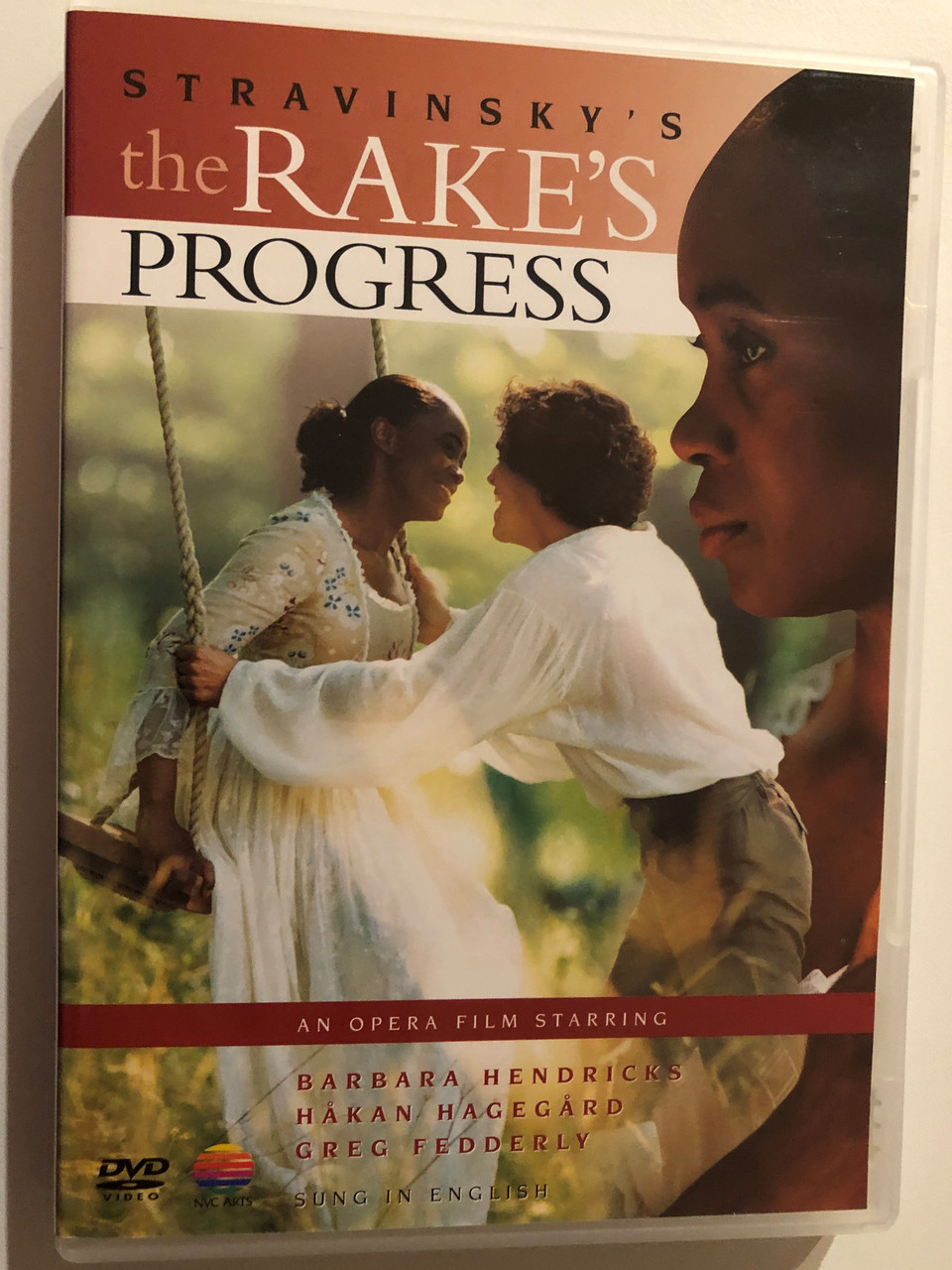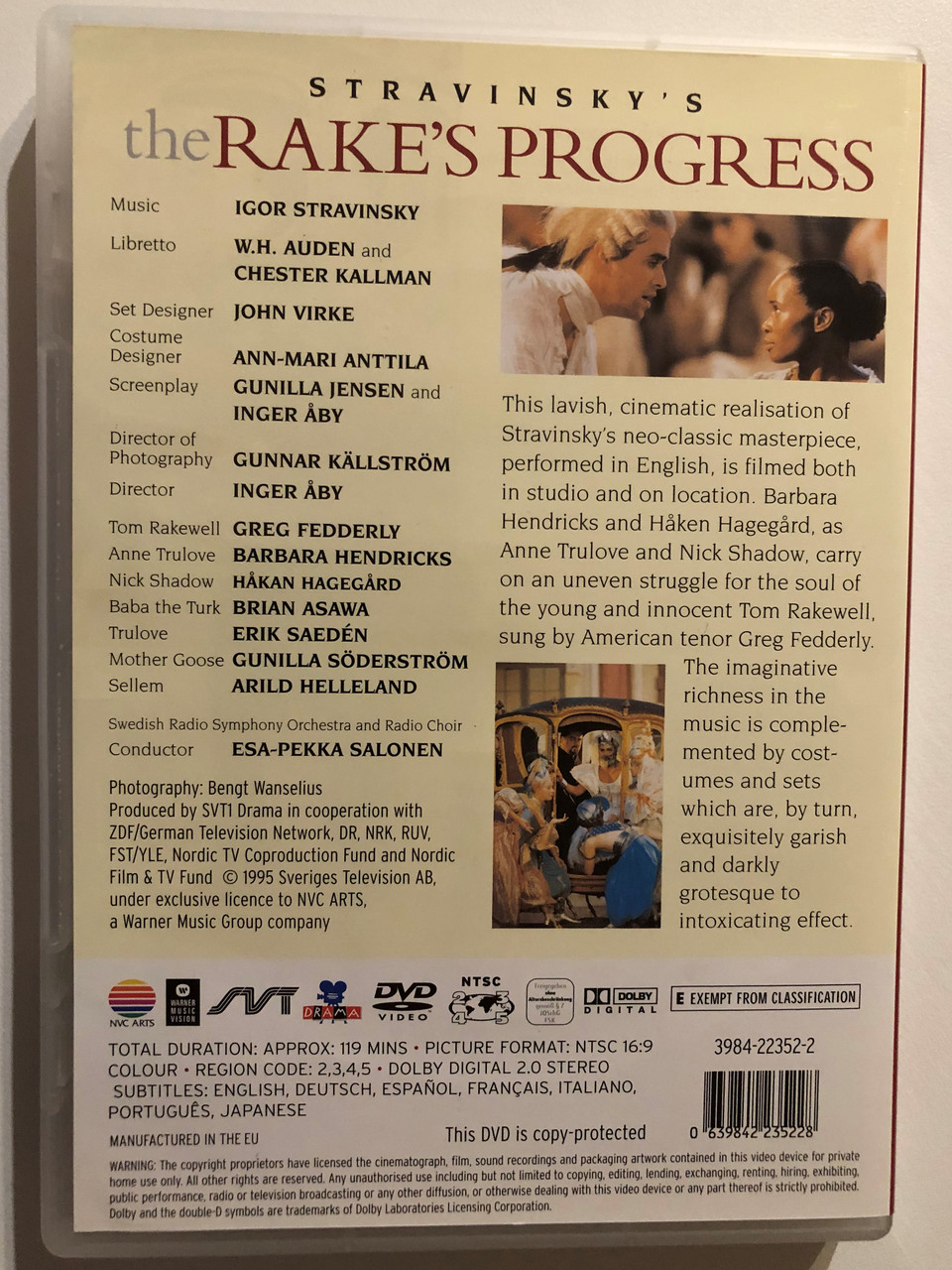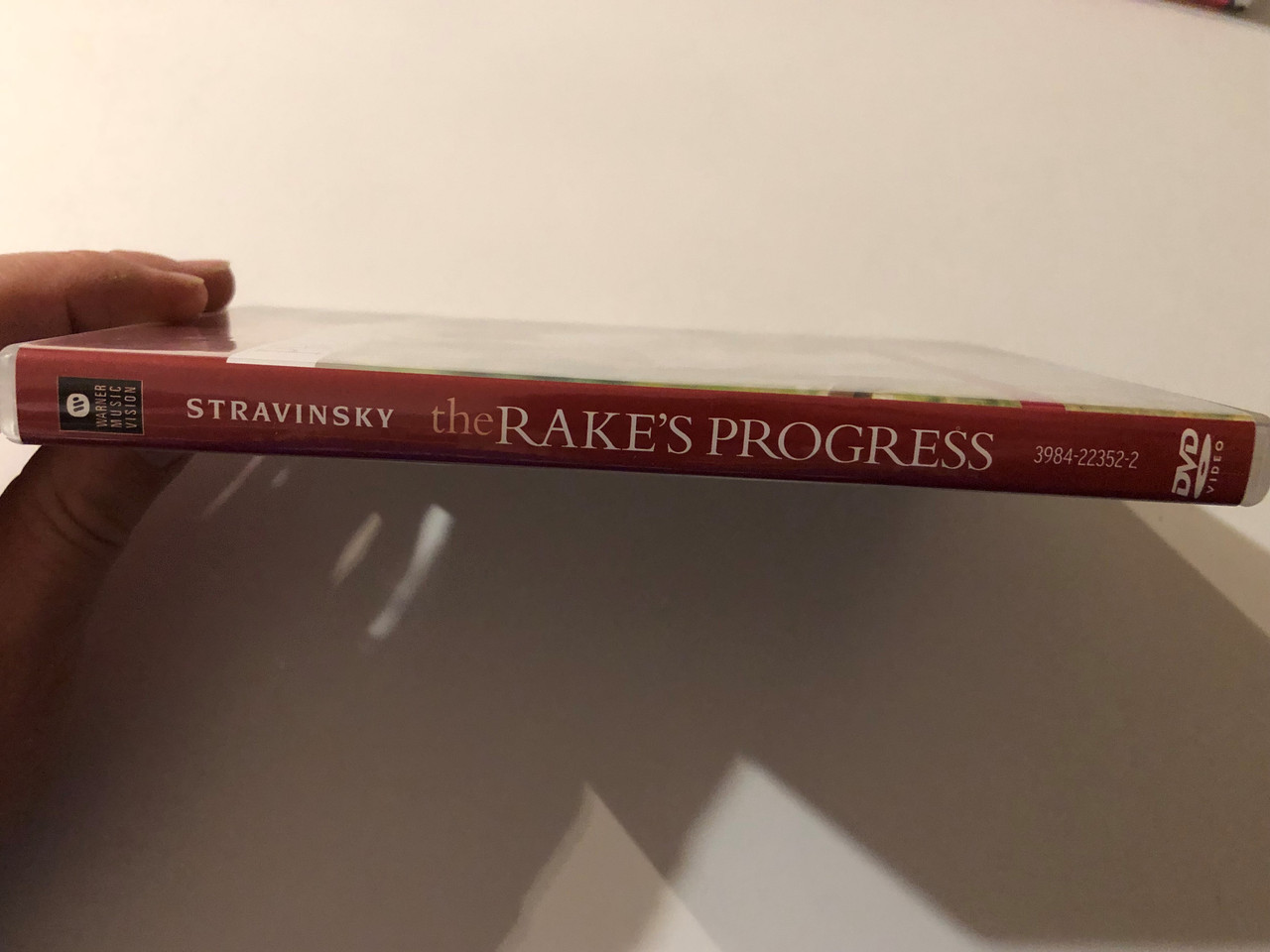Description
Stravinsky: The Rake's Progress / Swedish Radio Symphony Orchestra and Radio / Choir Conductor: ESA-PEKKA SALONEN / Director: GREG FEDDERLY / DVD
Format: NTSC
Run time: 119 Minutes
UPC: 0639842235228
- Aspect Ratio : 16:9
- Language : English
- Package Dimensions : 18.03 x 13.76 x 1.48 cm; 83.16 g
- Media Format : Import, Classical
- Release date : October 11, 2005
- Actors : Barbara Hendricks
- Subtitles: : Italian, English, German, Spanish, French, Portuguese, Japanese
- Language : English (Dolby Digital 2.0)
- Studio : Warne
- Number of discs : 1
The Rake's Progress is an English-language opera from 1951 in three acts and an epilogue by Igor Stravinsky. The libretto, written by W. H. Auden and Chester Kallman, is based loosely on the eight paintings and engravings A Rake's Progress (1733–1735) of William Hogarth, which Stravinsky had seen on 2 May 1947, in a Chicago exhibition.
The story concerns the decline and fall of one Tom Rakewell, who deserts Anne Trulove for the delights of London in the company of Nick Shadow, who turns out to be the Devil. After several misadventures, all initiated by the devious Shadow, Tom ends up in Bedlam, a hospital for the insane at that time situated in the City of London. The moral of the tale is: "For idle hearts and hands and minds the Devil finds work to do."
“Can a composer reuse the past and, at the same time, forge ahead? Whatever the answer is, this academic question did not concern me as I was composing the work.” These words from Igor Stravinsky seem to dismiss the heated comments raised by a unique work that takes on tradition in order to better transform it. Introduced as Stravinsky’s last work from his “neoclassic” period, The Rake’s Progress was composed between 1948 and 1951 based on a series of eight engravings by the painter William Hogarth, entitled “A Rake’s Progress” (1732-1733). They illustrate the gradual decline of a lazy and profligate young heir who squanders his fortune on gambling and pleasure only to end up in the Bedlam insane asylum. Stravinsky immediately saw the possibility for a sequence of opera tableaux in this series, giving him an opportunity to bring back to life the atmosphere of the 18th century. His writer friend Aldous Huxley put him in touch with poet W. H. Auden, considered the English Paul Valéry, to write the libretto, which departed from the original model in many respects. The cynical rake becomes a weak, lazy and dreamy man, led to his doom by a blend of Mephistopheles and Leporello, both master and servant. The Faust legend is not far off, with the proffering of a pact that turns into more of a deal gone wrong. Especially when the character of Anne Trulove is added in: representing “true, redeeming Love”, embodied by Elisabeth Schwarzkopf when it was created. The shadow of Don Giovanni also hovers over this carefully wrought libretto, which is driven by the sheer pleasure of theatrical invention. At first Stravinsky was criticised for having composed a pastiche, a mere “summary of a Mozart opera” (André Boucourechliev), symptomatic of a crisis of inspiration. Mozart may serve as stylistic reference for the score, in which we can also detect the influence of Rossini and Donizetti, but that did not prevent Stravinsky from asserting his own musical language of tonal and harmonic ambiguities. The work became a repertory staple in the late 1970s, precisely because of this strangeness, the result of an astonishing balance between pastiche and modernity, past and new perspectives.

























